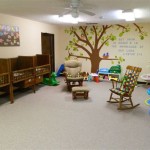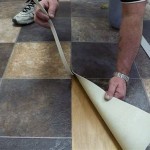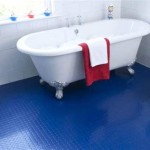Wood Flooring Installation Cost in Malaysia: A Comprehensive Guide
Wood flooring has long been a popular choice for Malaysian homeowners seeking to enhance the aesthetic appeal and value of their properties. Its natural beauty, durability, and warmth contribute to a comfortable and inviting living space. However, understanding the cost involved in wood flooring installation is crucial for effective budgeting and planning. This article provides a detailed overview of the various factors influencing wood flooring installation costs in Malaysia, helping homeowners make informed decisions.
The total cost of wood flooring installation in Malaysia is influenced by several interconnected variables. These include the type of wood flooring chosen, the size of the area to be covered, the complexity of the installation process, the existing condition of the subfloor, and the labor costs involved. Each of these aspects contributes significantly to the overall expense, and a clear understanding of these factors is essential for accurate budgeting.
Factors Influencing Wood Flooring Installation Cost
The following factors play a significant role in determining the final cost of wood flooring installation in Malaysia:
Type of Wood Flooring
The choice of wood flooring material is arguably the most significant factor affecting the overall cost. Different types of wood flooring come with varying price points, reflecting their inherent properties, durability, and aesthetic appeal. The main types available in Malaysia can be broadly categorized into solid wood, engineered wood, and laminate wood.
Solid wood flooring is composed of planks milled from a single piece of timber. It is considered the most premium option due to its natural beauty, longevity, and the possibility of refinishing multiple times. Common solid wood species used in Malaysia include Merbau, Kempas, and Balau, each offering unique grain patterns and color variations. The cost of solid wood flooring is generally the highest among the three options, ranging from RM20 to RM50 per square foot, depending on the species and grade of the wood.
Engineered wood flooring consists of a thin layer of hardwood veneer bonded to a core of plywood or fiberboard. This construction provides greater dimensional stability compared to solid wood, making it less susceptible to warping or expansion due to changes in humidity. Engineered wood flooring offers a similar aesthetic appeal to solid wood at a more affordable price point. The cost typically ranges from RM10 to RM30 per square foot, depending on the thickness of the veneer and the quality of the core material.
Laminate wood flooring is a synthetic product that mimics the appearance of wood. It consists of a photographic image of wood grain laminated onto a composite wood core. Laminate flooring is the most budget-friendly option and is known for its durability, ease of maintenance, and resistance to scratches and stains. However, it lacks the natural beauty and feel of real wood and cannot be refinished. The cost of laminate wood flooring typically ranges from RM5 to RM15 per square foot.
Size and Complexity of the Installation Area
The size of the area to be covered directly impacts the amount of materials required and the labor time involved, thus influencing the overall cost. Naturally, larger areas entail a higher material cost. However, the cost per square foot may decrease slightly for larger projects due to economies of scale.
The complexity of the installation area also plays a crucial role. Rooms with irregular shapes, numerous corners, or intricate patterns require more meticulous cutting and fitting, increasing the labor time and potentially generating more waste. Installation around obstacles such as pipes, stairs, or built-in furniture also adds to the complexity and cost.
Subfloor Preparation
The condition of the existing subfloor is a critical factor that can significantly affect the cost of wood flooring installation. A smooth, level, and dry subfloor is essential for a successful and long-lasting installation. If the subfloor is uneven, damaged, or contaminated with moisture, it must be properly prepared before the new flooring can be installed.
Subfloor preparation may involve leveling the surface with self-leveling compound, patching cracks and holes, removing old flooring materials, and ensuring adequate moisture control. These additional tasks can add significantly to the overall cost, especially if extensive repairs are required. In some cases, it may be necessary to install a new subfloor entirely.
Labor Costs
Labor costs constitute a substantial portion of the overall wood flooring installation expense. The cost of labor varies depending on the experience and expertise of the installer, the complexity of the project, and the location. It is crucial to engage a reputable and experienced installer to ensure a high-quality installation that meets industry standards.
Labor costs are typically calculated on a per-square-foot basis, ranging from RM3 to RM10 per square foot, depending on the factors mentioned above. More complex installations, such as those involving intricate patterns or challenging subfloor conditions, will generally command higher labor rates. It is advisable to obtain multiple quotes from different installers to compare prices and assess their qualifications.
Additional Costs to Consider
Beyond the core factors discussed above, several additional costs should be considered when budgeting for wood flooring installation:
Underlayment
Underlayment is a thin layer of material installed between the subfloor and the wood flooring. It provides cushioning, sound insulation, and moisture protection. The type of underlayment required depends on the type of wood flooring and the specific needs of the project. Underlayment costs typically range from RM1 to RM5 per square foot.
Moldings and Trim
Moldings and trim are used to conceal gaps between the flooring and walls, doorways, and other fixtures. They add a finishing touch to the installation and enhance the overall aesthetic appeal. Common types of moldings include baseboards, shoe moldings, and quarter rounds. The cost of moldings and trim varies depending on the material and style chosen, ranging from RM5 to RM20 per linear foot.
Waste Factor
During the installation process, some amount of material will inevitably be wasted due to cutting, fitting, and damage. It is essential to account for a waste factor when ordering materials to ensure that there is enough flooring to complete the project. A typical waste factor is 5-10% of the total square footage.
Removal and Disposal of Old Flooring
If old flooring needs to be removed before the new wood flooring can be installed, the cost of removal and disposal should be factored into the budget. This cost can vary depending on the type and amount of old flooring material to be removed. The cost can range from RM1 to RM3 per square foot.
Moving Furniture
Most flooring contractors will require the homeowner to clear the area to be installed before work begins. However, some contractors may offer furniture moving services for an additional fee. This is an important consideration if moving heavy furniture is a concern.
Tips for Managing Wood Flooring Installation Costs
While wood flooring installation can be a significant investment, there are several strategies to manage costs effectively:
Obtain Multiple Quotes
Getting quotes from multiple installers is crucial for comparing prices and assessing their qualifications. Be sure to provide each installer with the same information about the project to ensure accurate and comparable quotes.
Choose the Right Material
Selecting the appropriate type of wood flooring for your needs and budget is essential. Consider the level of traffic in the area, the aesthetic you are trying to achieve, and your budget constraints. Engineered wood or laminate flooring can be viable alternatives to solid wood for cost-conscious homeowners.
Explore Different Brands and Grades
Within each type of wood flooring, there are various brands and grades available. Exploring different options can help you find a product that meets your needs and budget. Consider factors such as the thickness of the veneer (for engineered wood), the wear layer (for laminate flooring), and the grade of the wood (for solid wood).
Prepare the Subfloor Yourself
If you are comfortable with DIY projects, you may be able to save money by preparing the subfloor yourself. This can involve tasks such as removing old flooring, patching cracks and holes, and leveling the surface. However, it is crucial to ensure that the subfloor is properly prepared to avoid issues with the installation later on.
Consider Installing in Stages
If you have a large area to cover, you may consider installing the flooring in stages to spread out the cost over time. This can make the project more manageable financially.
By carefully considering these factors and planning accordingly, homeowners can effectively manage wood flooring installation costs in Malaysia and achieve their desired aesthetic within their budget.

Wooden Flooring Options For Malaysian Homes Recommend My

7 Best Wooden Flooring Options For Your Home With S Iproperty Com My

Wooden Flooring Options For Malaysian Homes Recommend My

7 Best Wooden Flooring Options For Your Home With S Iproperty Com My

Wooden Flooring Options For Malaysian Homes Recommend My

7 Best Wooden Flooring Options For Your Home With S Iproperty Com My

5 Pros And Cons Of Wooden Flooring Sdhome Guide

Wooden Flooring Options For Malaysian Homes Recommend My

Spc Flooring Malaysia Hanyo Vinyl Factory

Wooden Flooring Options For Malaysian Homes Recommend My
Related Posts








